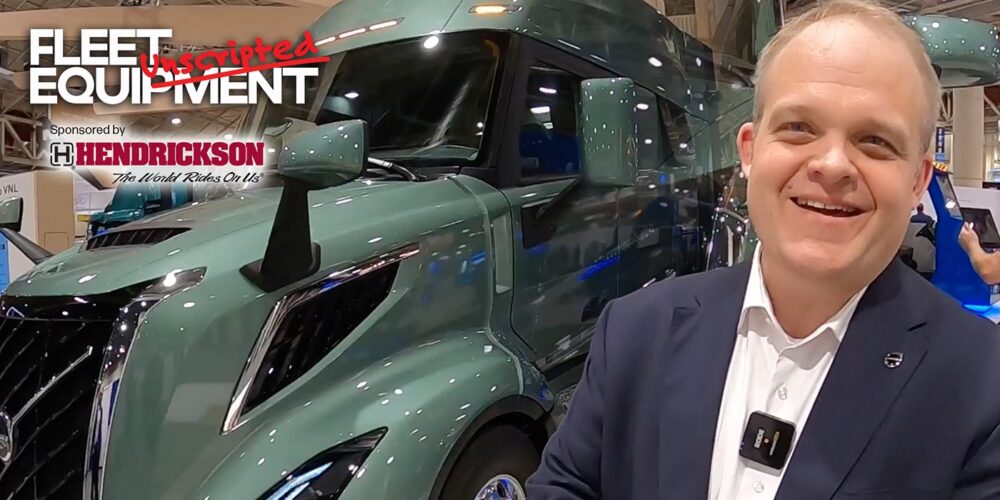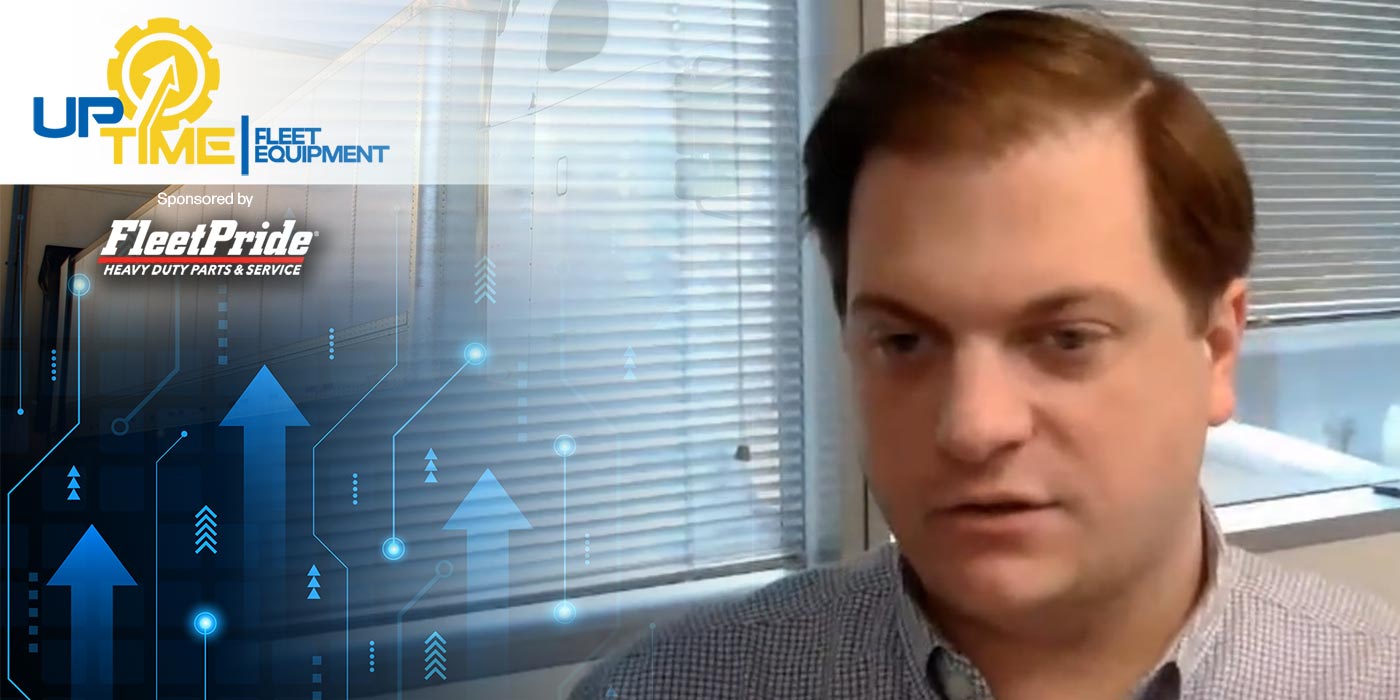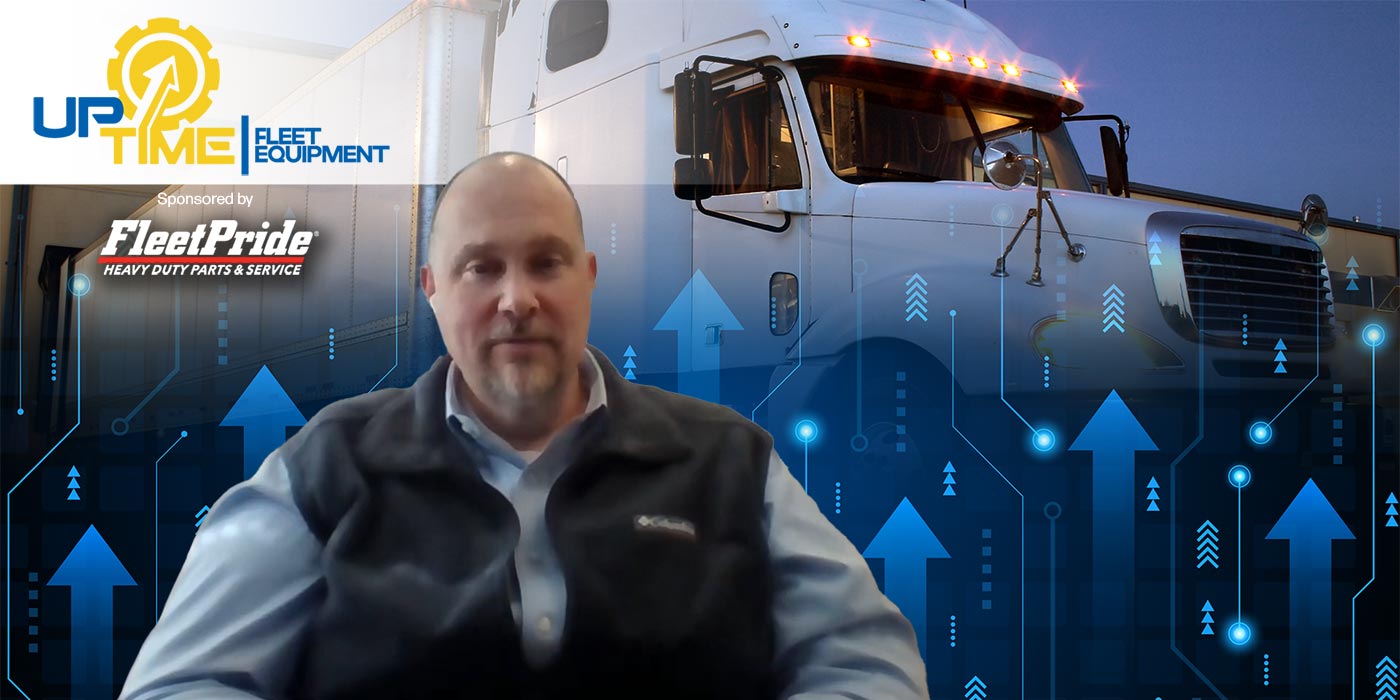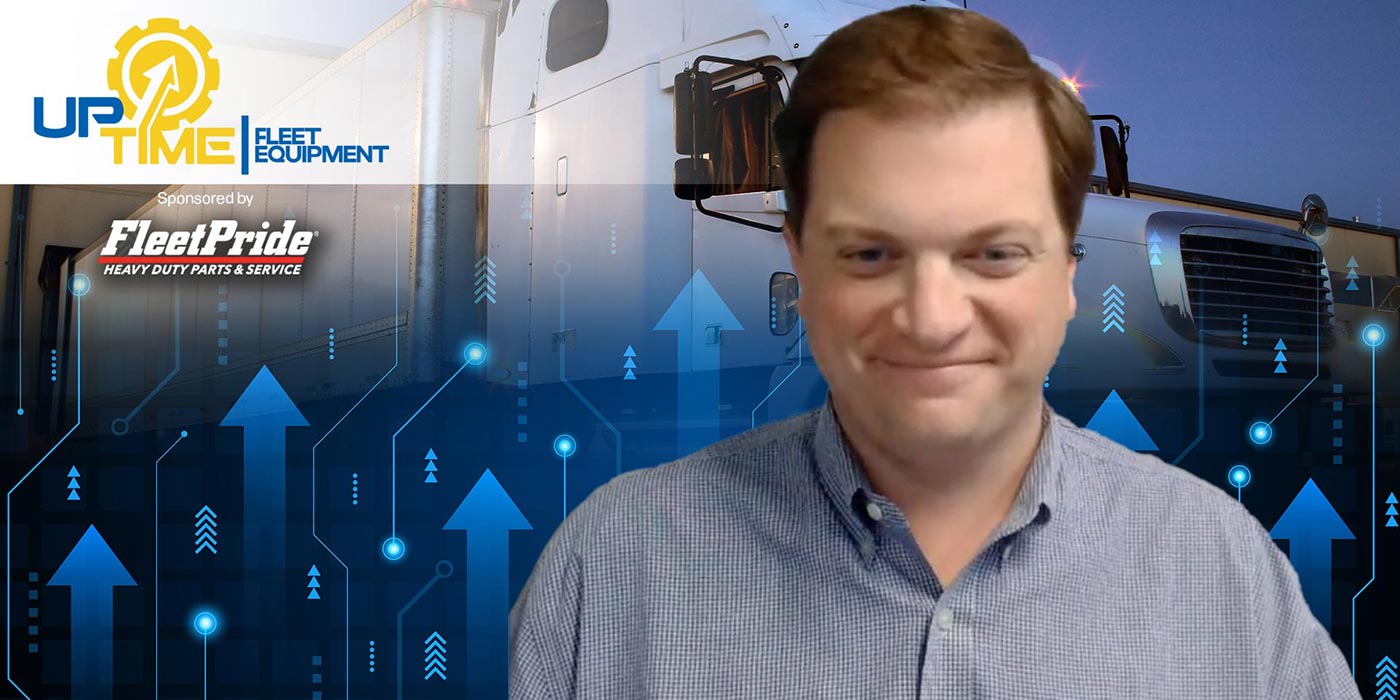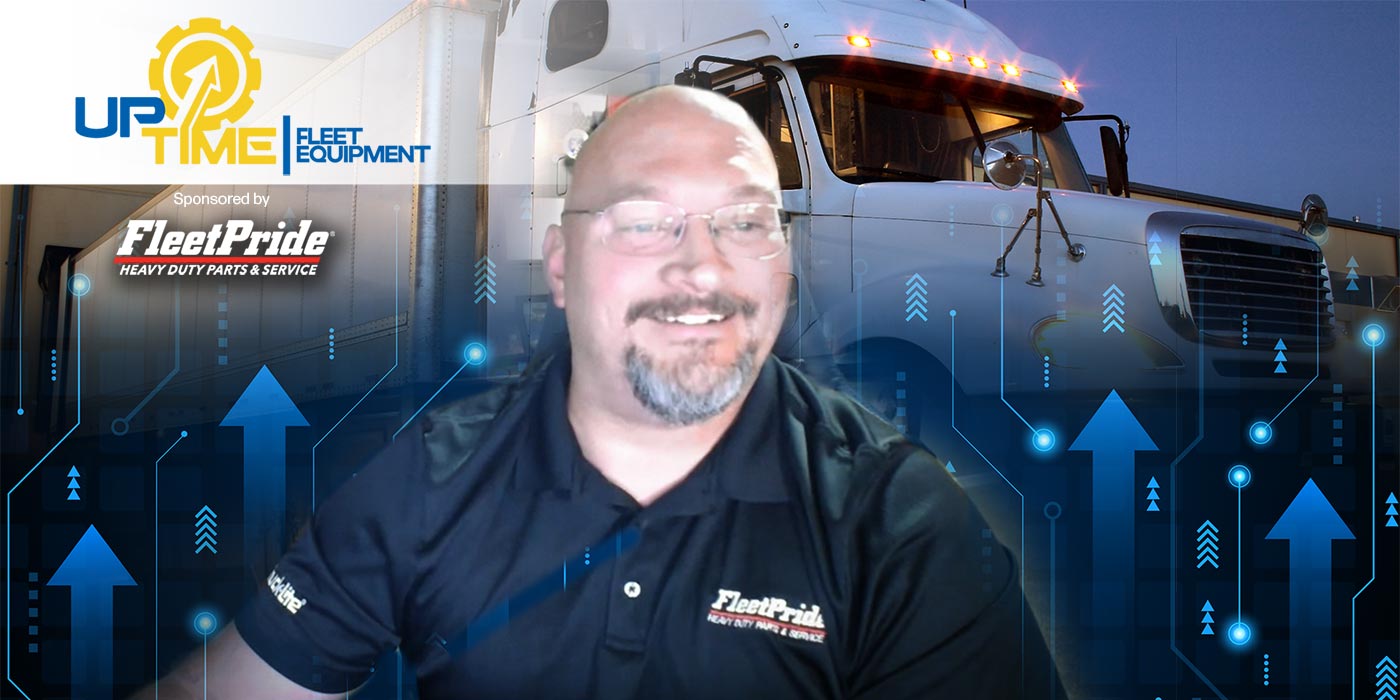At the end of the day, sustainable operations are good for everyone, especially when sustainability checks out for a fleet’s bottom line. However, the journey getting to that sustainability set point can be a challenge. We’re all being inundated with talks of legislation and rules and standards, and each of these is coming with its own set of restrictions and legalese. If you aren’t paying attention, you could get caught flat-footed a few years down the road when these standards start taking effect.
“There’s going to be a lot of new technology coming out. The goal is to keep fleet costs down as much as possible,” says Mike Walker, service area manager for the southeast region at FleetPride. “There’s going to be a learning curve for repair facilities, for technicians of these components that are going to come out. There are going to be new strategies in fueling and airflow that we’re not used to, there’s going to be a new paradigm shift of figuring out, how much fuel do we put in the truck versus how much power does it output? Now, the new paradigm is, how can we get this load down the road with the least amount of emissions as possible?”
On this episode of Fleet Uptime, we come prepared with questions to set the record straight on upcoming trucking standards. Watch the video above to learn from Mike about what the EPA’s Clean Trucks final rulemaking that was released late last year really means for fleets running heavy-duty trucks, what fleets should concern themselves with today, and how to keep ROI high while keeping up with the latest sustainability legislation.
The information provided in this video does not, and is not intended to, constitute legal advice; instead, all information and content is for general informational purposes only. Viewers should seek legal counsel with respect to any regulatory or compliance matters.
Looking for more Fleet Uptime? Click here.
Here’s a transcript of the show:
David Sickels: Mike, thank you so much for joining us today. I really appreciate your time and all of your knowledge on this topic. I know you are just a master of it and love to dive in. So on that note, I want to dive into our first question here. Can you help us break down what the EPA’s Clean Trucks final rulemaking that was released late last year really means for fleets running heavy-duty trucks?
Mike Walker: Yes, definitely. And first off, thank you for having me. I appreciate coming on board here. So there are three major takeaways with EPAs final ruling. First off, the most obvious, their goal is to reduce emissions, and what do you we mean by emissions? Well, it’s carbon dioxide, carbon monoxide, hydrocarbons, which is fuel and oil, your particulate matter, which is the soot and ash that you see coming out of the tailpipe, and then NOx, which we’re all probably most familiar with. Overall, the ruling calls for about an 82% reduction in NOx and a 50% reduction in particulate matter, but these percentages are difficult to express because of the operating parameters in which they are monitored. So that is the second takeaway is, the operating conditions in which these emissions are monitored have expanded to include idle and very low load operations on top of higher power operations that we’re used to.
So what I mean by higher power operation is actually driving the truck down the road, you are hauling freight and then your low loaded operation is sitting at a truck stop, waiting to get loaded and unloaded or maybe stop and go traffic, things like that, before the engine is up to temperature. So this is all brand new, monitoring the output at those levels. The third takeaway is the standard for the useful life of an HD engine has increased from about a hundred thousand miles to 450,000 miles, and the purpose of this was to increase the warranty. But as the old adage applies, there’s no such thing as a free lunch. This is something that will definitely increase cost and whatever waste because to increase the warranty, you have to increase durability and to increase durability, you’re going to increase cost. Now, before we go on, one thing I want to talk about is the expansion of the operating conditions, that the NOx is monitored, this is where we’re going to see all our engineering challenges. This is where we’re going to see the new technologies that are going to come out.
And so, to clarify, our current technology needs to reach higher temperatures to operate effectively. So for the NOx to be converted into things like nitrogen, oxygen, water, carbon dioxide, the catalyst or the SCR, selective catalytic reduction system, must be up to temperature. So to reach these low loads in lower temperatures is going to be a challenge. There are very common zeolites that we could use, but they’re subject to contamination and that’s our number one enemy already. So we don’t need something that is more prone to contamination than what we have already. And then also, with our current technology, DEF, or diesel exhaust fluid, if it’s injected below 360 degrees Fahrenheit, then you’re going to end up with deposits on your catalyst, which then reduces your NOx. So what ends up happening is with these lower temperatures, we have a lot of new technologies that need to be developed. So what does this mean for fleets? It means that the technologies that we’ve developed and the technologies that are going to be developed are much more complicated, and as a result, they’re going to be more expensive.
David Sickels: Got it. Got it. So I did hear one thing in there that I wanted to bring up. A better warranty, more miles, that sounds great. Where does the cost increase come when you’re talking about a higher warranty?
Mike Walker: Yeah, so it’s a multifaceted question. So you’re going to have increases in durability. That’s going to be a requirement because if we don’t last 450,000 miles, then the manufacturer’s going to end up having to pay for it again. But with those increases in durability come cost, come manufacturing cost, come with material cost. So we will inevitably see an increase in parts. But secondly, there will be this knowledge lag time from when this technology’s introduced to when the technicians have a good grasp of it. So within that, the cost is associated with that extra time and it will be applied to things like the overall cost of the truck or warranty.
David Sickels: Got it. Okay. So can you give us kind of an order of operations as far as, okay, if I’m a fleet owner, what do I need to be concerned with today and what can I concern myself with tomorrow or down the road or years from now?
Mike Walker: Yes. So the first thing they can do is just become educated in the new law. All the information on this final ruling can be found easily on the EPA’s website. So get a source from the horse’s mouth. Let’s read through it. Each fleet’s going to need some type of subject matter expert that’s lived through the last round of regulation changes and they know the challenges of the previous rollout and how it affected fleets, whether positively or negatively. So the subject matter expert can be in-house or an outside vendor that has the experience and network support to fill in those knowledge gaps that will inevitably be there.
Secondly, fleets are going to really need to bump up their maintenance program, which is going to take a long time. We have till 2027 to make that happen, but they’re going to have to beef up their maintenance program, which includes better tracking, things like VMRS codes to track types of repairs, more understanding of what this reporting means because once the reporting happens, a lot of times, then we’re able to deduce what caused failures over time by using that previous reporting and by using those VMRS codes. And again, this can be achieved through in-house people or through outside maintenance providers, but if it is an outside maintenance provider, it’s consistent that they have to have an across the board reporting and to be able to accommodate the fleets freight lanes and have the capability of helping fleets keep track of this health over time.
And then third, they’re going to have to start developing relationships with repair suppliers. There are going to be inevitable bottlenecks, both labor bottlenecks and parts bottlenecks. We don’t know the failures until they start happening. We can kind of have an idea, but until the repairs start happening, we don’t know what parts are going to fail, we don’t know what components are going to be hard to diagnose and until that happens, you’re going to have this lag time in repair time. You’re going to have this lag time of increased time down before the truck is actually completed. And then you’ll have your increased parts productions and your technical service bulletins that come out and your repair practices that come out, your tips and tricks, I guess, a lot of people would say, but until then, there will be bottlenecks.
And then lastly, one of the hot topics right now with this rollout is, fleets are going to have to come up with strategies on what’s going to cost them less. To keep their current units, maybe refurb them, something like that, buy used units and do the same or purchase new, these new 2027 models, or have a pre-buy in 2026 so they can have the newest possible without dealing with these 2027 rollouts. And this is something that, most likely, each fleet’s going to have to have a blend of those strategies.
David Sickels: That makes a ton of sense. And for a lot of fleets, I feel like there is going to need to be some kind of blend there in order for things to work out the way that they need them to. So as we throw around the year 2027 pretty often here, are there any other dates that we need to be aware of? Is there anything set in stone as far as these standards are concerned, that we need to have top of mind?
Mike Walker: So set in stone? No, but we’re talking about the 2024 ban of diesel engines through California? There’s a lot of stuff up in the air right now, so that’s why everybody needs to keep up to date on the news cycle because this stuff is changing on, maybe, a two-week basis. Every couple of weeks, you hear something new and it changed a little bit, and then when something else gets rolled out like this 2027, there’s immediate backlash. So really, there are no solid dates yet, but stay up to date on it.
David Sickels: Yeah, I can confirm that. It seems like just about every week I open my computer, I say, “Wait a sec, wait a second, hold on, back up. I haven’t figured out the last one yet.” Okay, so…
Mike Walker: As soon as it comes out of your mouth, it’s out of date.
David Sickels: Exactly. Exactly. It’s fast and furious right now. As far as parts, maintenance, and repair go, what do we need to be aware of? What do we need to be thinking about when we’re trying to follow the EPA’s guidelines, but also trying to keep ROI as high as possible?
Mike Walker: So there’s going to be a lot of new technology come out. So the goal is to keep fleet costs down as much as possible. So there’s going to be a learning curve for repairs facilities, for technicians of these components that are going to come out. There are going to be new strategies in fueling and airflow that we’re not used to, there’s going to be a new paradigm shift of, how much fuel do we put in the truck versus how much power does it output? Now, the new paradigm is, how can we get this load down the road with the least amount of emissions as possible? So there will be new forms of progressive damage, things like that, that the fleets are going to have to get on top of quickly. And that’s where this all roots down to itself of, we’ve got to support this Right To Repair because we know these calls are coming.
We know these costs are coming long term and short term, as soon as this model year 2027 comes out. So the goal is, we need to understand, fully, the systems before we can repair it effectively, and without this information readily available, it’s going to be a very difficult process.
David Sickels: So you mentioned Right To Repair there. Is that FleetPride’s stance as well regarding Right To Repair, that this is a very important issue, we need to make sure that we’re supporting this and get this pushed through?
Mike Walker: Yes. So we believe, at FleetPride, the Right To Repair Act is very important. With all this new technology that’s coming out, there’s going to be an information lag behind it. And without providing some type of resource for shops, for owner-operators, for fleets to actually learn these new systems, learn the components and learn how to repair the inevitable failures, we’re just setting the whole system up for failure, or we are de-incentivizing buying these new units and we are incentivizing repairing older units. So to get this across, yes, we highly support the right repair.
David Sickels: Got it. Got it. Okay. We’re talking about components, about different parts of the truck. You think of the engine, you think of emission systems that are being directly affected by these rules, are there any non-obvious components that we need to be keeping an eye on when it comes to still following these standards and keeping our uptime and our ROI up?
Mike Walker: Yeah, definitely. So there are things that we can do, and they all revolve around preventing contamination in the after-treatment system. So watching your coolant loss, watching your fuel loss, watching your DEF consumption. So the number one preventable problem I see in that treatment repairs is when a driver or customer sees a coolant leak and they think that they know the source of that coolant leak because it might be coming from a component, let’s say, like the heater core, and it’s coming from the sleeper and they see the drip, so they associate that coolant loss with that leak. Little do they know that there might be an internal leak as well. And so, without fixing the external leak, they don’t know of the internal leak that is slowly contaminating and poisoning their after-treatment system from turbo to tailpipe. So it’s important now, and even more so as time goes on and with this new model year 2027 rollout, that we prevent any type of contamination from the after-treatment system by repairing coolant leaks as soon as possible.
David Sickels: Okay. So you put your truck in the shop… We’re talking about a 2027 rule here, so how do you train your technician to be aware of what they’re going to need to look out for these trucks several years down the road here? I mean, is there any way to ensure that they’re going to be ready when the time comes? Can we start now or do we have to wait until ’26? What’s your best advice there?
Mike Walker: Yeah, great question. So that is the key to the whole situation. That’s how we’re going to make it out of this new ruling in good shape. So FleetPride, for example, has made the development and training of its technicians a priority. We not only teach the technician what the components are, but we try to make them understand the systems as a whole. So one strategy is to teach the technician the evolution of the diesel engine from beginning to end, so how does the diesel engine work and what byproducts come out of that? And then you teach them the EGR system and that’s a strategy to reduce NOx. And then what’s the next step, which is the next regulation change? Was the DOC DPF and how we reduce particulate matter? The next step, the SCR system and how we reduce NOx further at that. So we teach them this evolution and by teaching them the evolution, we better prepare them for what’s going to come out in the future.
Now, the important thing to know is that we don’t know what technologies are going to come out for this model year 2027. We have a good idea, but we’re not positive what technologies are going to come out. And that’s why the Right To Repair is so important because there will be new technologies developed, there will be new strategies in managing temperature and airflow that we’re not used to, that has no historical precedent. There will be new failure codes with terms that we’ve never heard before or read about in the past, so without the manufacturers being transparent on what these components are, what these codes are, and what are the fueling and airflow strategies, and what components contribute to those strategies. And even down to the exact specs of, what are the voltage of a sensor to where I can correlate the signals with the actual readings? Without this knowledge, we are doomed to increase the cost and downtime for each fleet that purchases a new 2027 model and beyond.
David Sickels: Do you anticipate a lot of the training is going to be more around the software or is it the actual hardware that the technicians are going to be working on? Is it more kind of the computer and everything surrounding it, or is it the actual component themselves?
Mike Walker: Yeah, so the computer is a great tool, but it doesn’t help your understanding of what’s going on. So you might be able to see readings and you might be able to see your NOx output in sensor 1, 2, 3, 4, 5, but you have to understand what is the NOx reduction strategy from beginning to end. And without understanding that strategy, then the software is just numbers on a screen.
David Sickels: Sure.
Mike Walker: So a lot of this is going to be educating the strategy and the components used to maintain that strategy from turbo to tailpipe, and even before then. So the software is important and it will change and it will include new terms that we’re not used to in previous repairs, but it’ll be something that is just a tool overall.
David Sickels: So I know that we kind of know what technologies are going to be released, but we don’t know for sure. Can you expound on that at all? What do you anticipate this technology will be? Or do we really just… It’s kind of up in the air?
Mike Walker: So it’s up in the air. Right now, we don’t know what technologies are going to be developed because the final ruling doesn’t necessarily say the exact technologies that must be used, it just gives us thresholds that have to be achieved. But we know the engineering challenges and reducing Nox, we know the hurdles that we’re going to have to jump over to get to this point, so we can have an educated guess of what we’re going to see. So things like cylinder deactivation, you see this in your passenger vehicles as you’re driving to work and back. As you stop at a red light, a lot of times, you hear the engine soften down a little bit, and that’s cylinders being deactivated, and this is relatively a new technology in the diesel world. Also, something that’s been suggested within the EPA ruling is upstream SCRs. So this is a type of technology that we might use to have a separate system specifically for low-load operations.
And this is something that’s being developed right now, but contamination is an issue. And so, those are the hurdles that the manufacturers are having to get over. And then we’re probably going to see a lot more heating elements and electrical components. So a 24-volt heating system has been introduced, things like that, to actually heat up this exhaust system at your idle times, to where the system is up to temperature to actually convert the Nox like we want it to and to meet the regulations.
David Sickels: Oh, cool. Cool. Is that something that’s in the prototype stage or is that actually on the road today?
Mike Walker: So a lot of this is in the prototype stage. And the thing is, it’s not, “What technology can we develop in a factory sitting still in a controlled environment?”, It’s, “How long is this truck going to last with this technology?” So getting to these milestones is possible, but is it possible driving from New York to California to Miami, Florida, and all these type of operational conditions over a long, extended period of time? So reaching up to that 450,000-mile useful life. And so that’s the challenges that we’re going to see. Yes, the technology is there, but is the durability there and how do we get to that point?
David Sickels: Great points. Mike, you have encouraged me to get online and read all hundreds of pages for these rules because, I mean, to your point, it’s important and you’re going to miss things if you’re not paying attention and keeping up with the news and seeing what’s coming out. So hey, I really appreciate your time here today. I know I learned a lot and I have a lot to learn on this topic. Hopefully, we can get together again down the road and discuss again because this has been a lot of fun and really interesting.
Mike Walker: Thank you so much for having me on. I really appreciate it.





